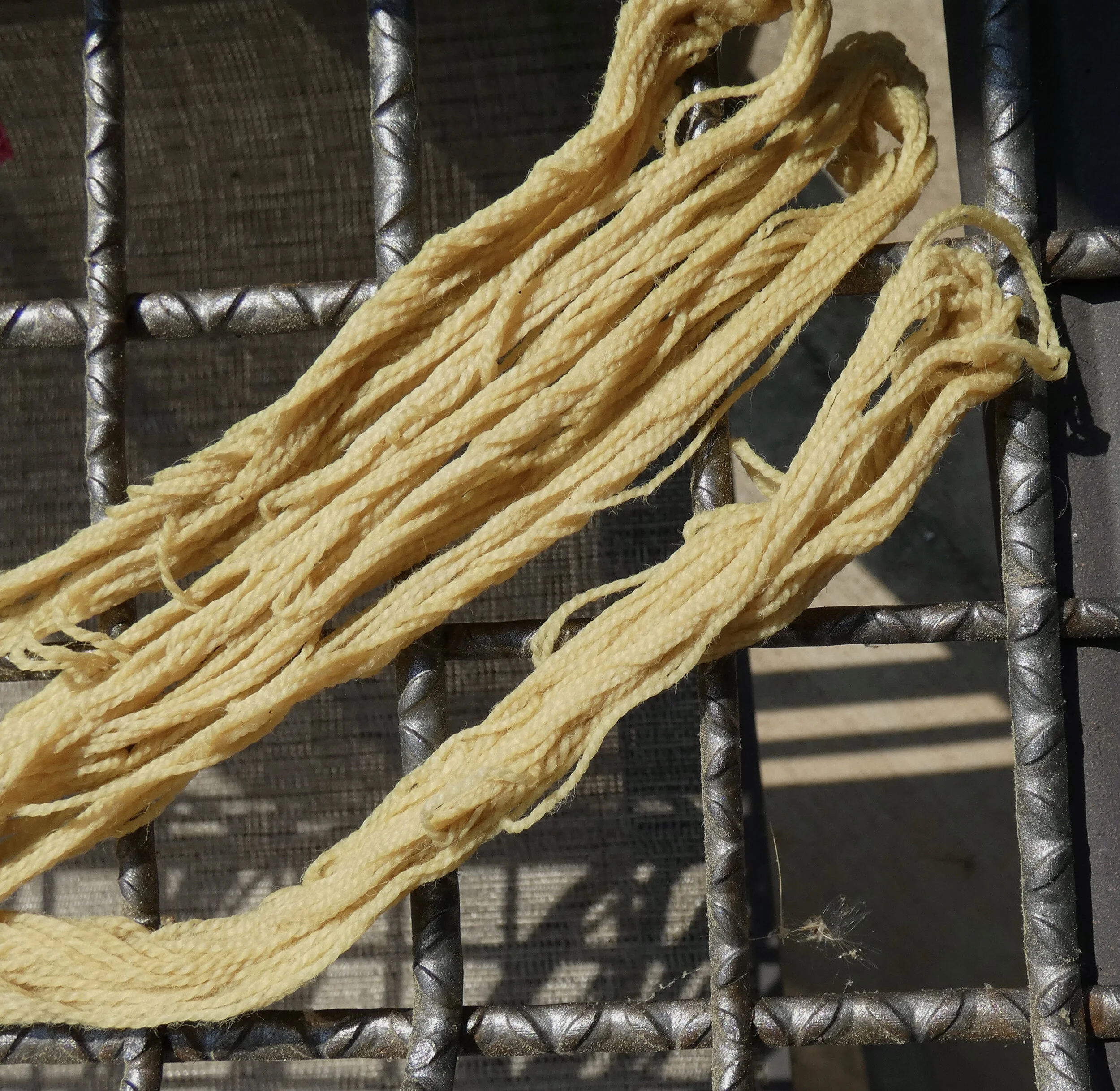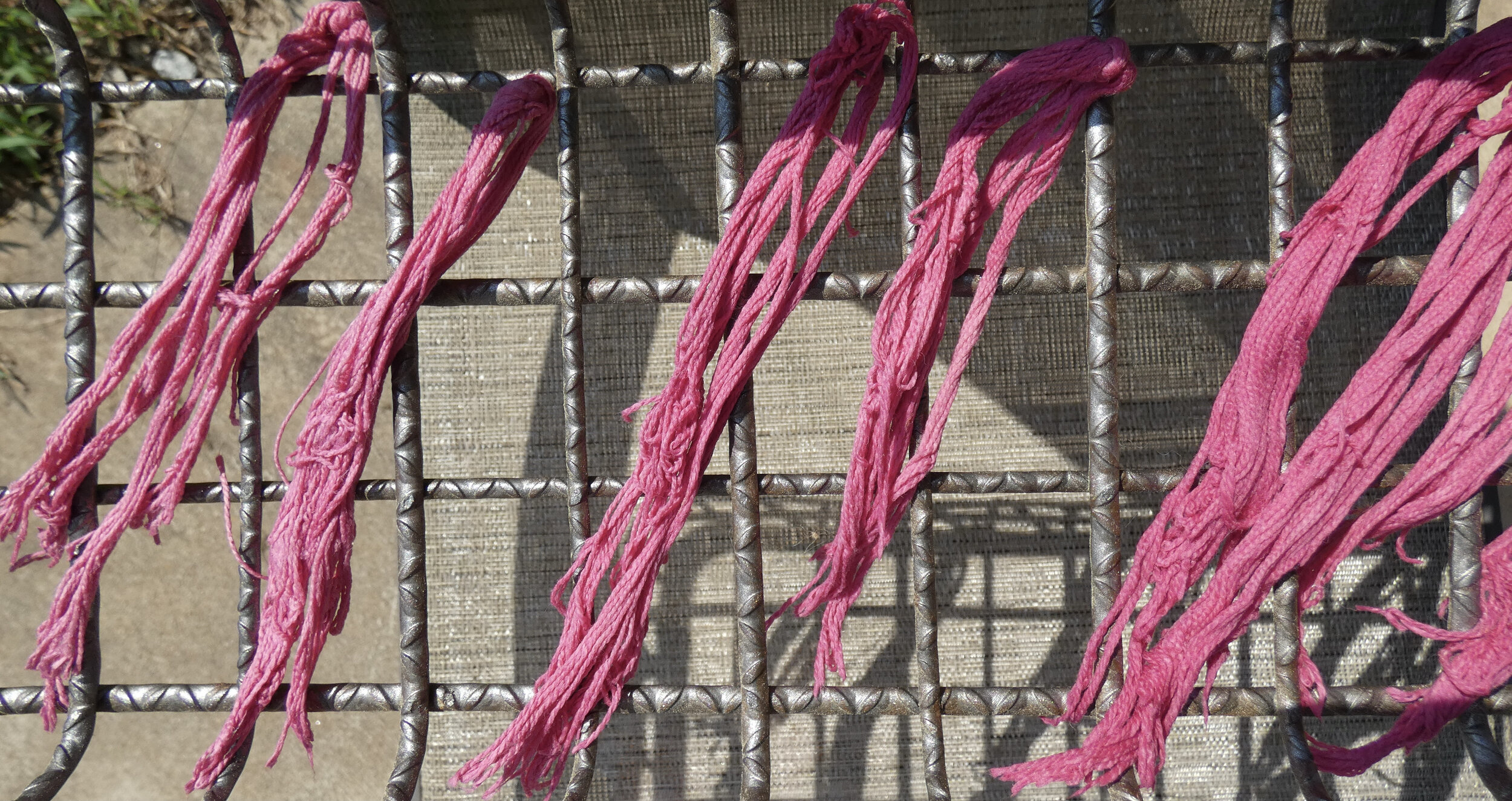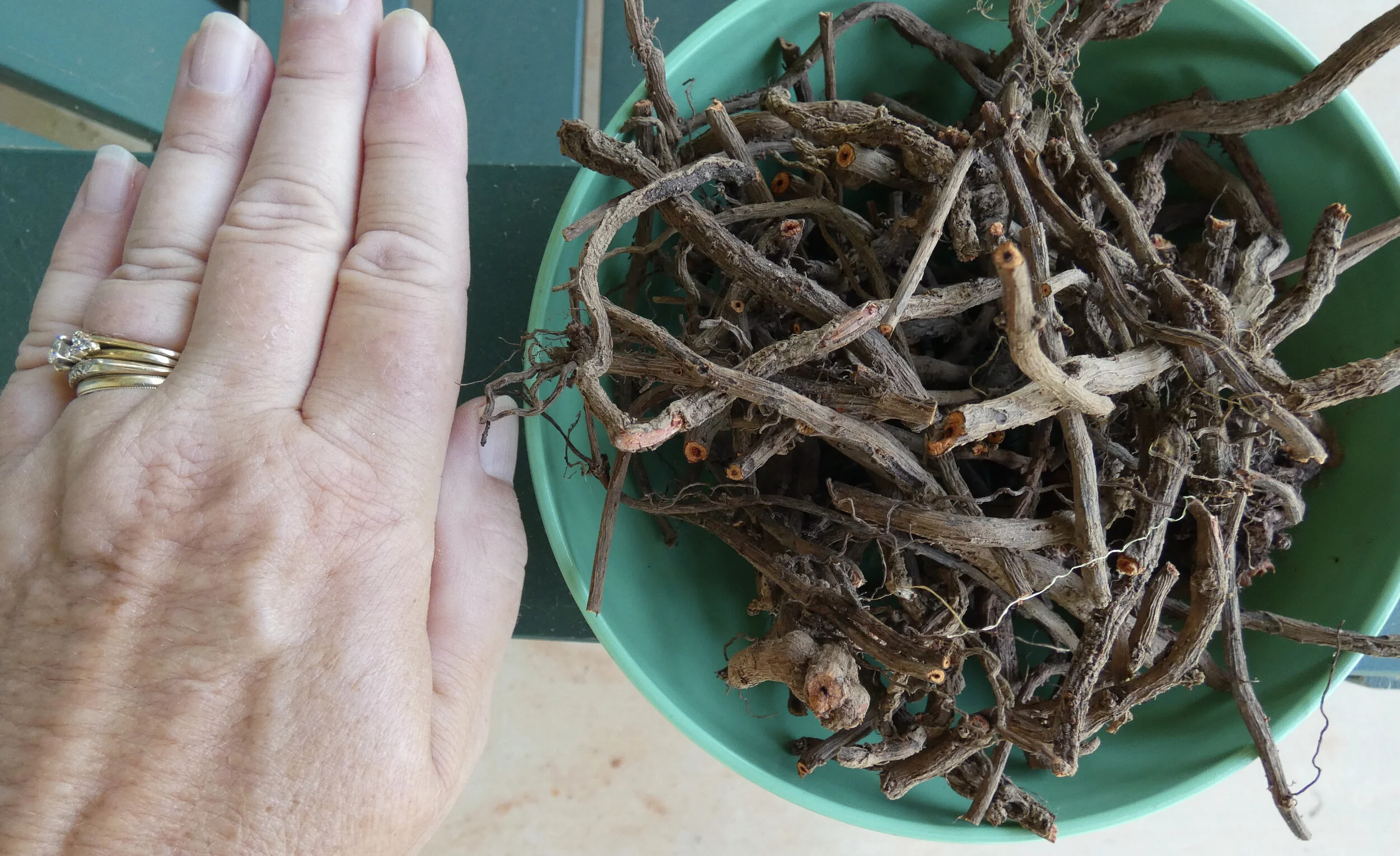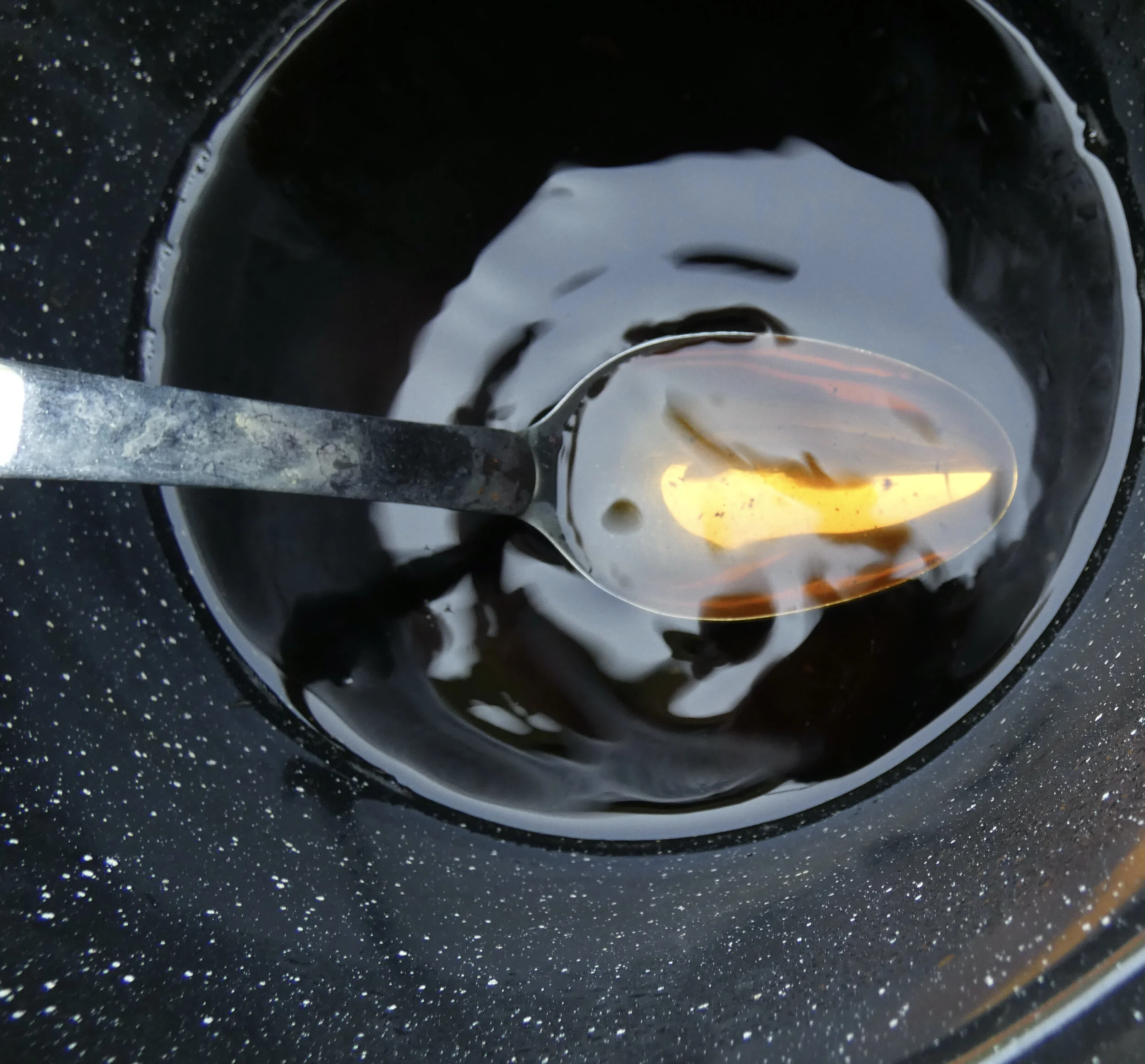Natural Dyeing-Day 2
To start Dye Day 2, I took the yarn out of the weld dye bath it had rested in overnight. I rinsed it in cool water until clear and then hung it to dry.
I took some of the premordanted thrums and put them into the weld exhaust bath. I followed the same process as yesterday, heating to 180F and holding the temperature there for an hour.
I left it to cool in the exhaust bath for about 6 hours, rather than overnight. The yellow is lighter in this second-time-around bath compared to the initial weld dyed yarn. I suspect it will be more noticeable after it dries.
This is also cochineal dye day. Yesterday, I told you that cochineal is a dyestuff from a dried insect. Cochineal bugs live on the Prickly Pear cactus and are native to Mexico and South America.
Like weld, cochineal has been used as a dye for centuries. Cochineal dyed cloth was considered a sign of wealth by European aristocrats, think the crimson red robes of royalty. Today it is a common additive to food, drugs, and cosmetics.
I have this little fun fact in my notes, but unfortunately, I did not record my resource. Cochineal insects were a valuable European import in the 16th century, coming in third after gold and silver.
Here is a little added treat for you. This is a link to a video presentation hosted by Botanical Colors as part of their Feedback Friday series. It is given by Elena Phipps, entitled “Cochineal Red: art history of a color”. The presentation starts at the 8:40 mark. Enjoy!
Cochineal is an interesting dye. Overall, cochineal dyes are red; however, the range can be from pink to purple-reds. In researching cochineal, I found several methods to alter the red color. Below, I’ll show you a couple of those methods I used on my extra thrums. I have more experiments on coming dye days.
So, on to dyeing with cochineal. I added a premordanted, wet skein and some thrums to the cochineal liquid I extracted yesterday. I heated it to 90F and tried to hold it there. However, even on the lowest setting on my propane stove, the temperature hovered at 120F. I went with it, maintaining that temperature for 30 minutes. I then increased the heat to a temperature of 180F for another 30 minutes.
I removed the dye bath from the heat and left the yarn to cool in the pot for about 6 hours. Then I rinsed and hung it to dry (thrums on far right).
My first modification used the exhaust/second bath. I added just a pinch of cream of tartar to the dye bath. Adding cream of tartar to cochineal is supposed to make the color deeper. I used the same temperatures and times as I did on the initial cochineal bath (thrums on far left).
The second modifier was to add 1/8 cup of ammonia to 2 cups tepid water. I immersed one of the cochineal dyed thrums for a few minutes, then rinsed. Ammonia acts as a base, raising the pH and shifting the color (thrums in the center).
To be quite honest, I can’t tell much of a difference. Perhaps it will be more pronounced when the yarn dries.
If you recall from the post on Fiber Preparation, I used Gallo tannin extract (from oak galls) in mordanting the fiber. I chose this as my tannin source because it has a pale, almost transparent, beige color, unlike some of the other tannins, which give red, yellow, or darker brown casts. It’s a very subtle color difference, but the yarns on the left are mordanted with Gallo tannin, and the yarns on the right have no tannin.
Tomorrow is madder dye day. So in preparation, the roots need to be soaked for 24 hours. I measured 50 grams of madder root, which will be 100% WOF (weight of fiber). My hand gives you a reference for that amount of madder.
I placed the roots in a small mesh laundry bag to keep them contained.
I covered the bag with water. After about 10 minutes, I noticed the water was a pale reddish-brown. I’m not sure if this was dye extracting or some residual dirt off the roots. I chose to toss this water and cover it again with fresh water for an overnight soak.
I also checked on my soaking walnuts. The water is turning a beautiful golden brown!
See you tomorrow for Day 3.
Debby

















